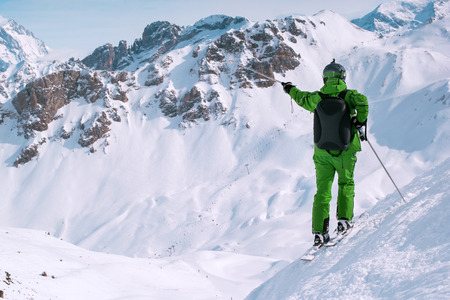Introduction to Altitude Sickness in U.S. Outdoor Adventures
Exploring the vast American wilderness is a bucket-list experience for many outdoor enthusiasts, but it comes with unique challenges—one of the most significant being altitude sickness. With iconic destinations like the Rocky Mountains, Sierra Nevada, and Colorado’s Fourteeners attracting hikers, climbers, and backpackers from across the country, understanding and managing altitude-related illnesses has become a critical part of safe adventure planning in the United States. Altitude sickness, also known as acute mountain sickness (AMS), occurs when you ascend to higher elevations too quickly, where the air pressure is lower and oxygen levels are reduced. This can affect anyone, regardless of fitness level or prior experience at high altitudes.
Common Symptoms of Altitude Sickness
| Symptom | Description |
|---|---|
| Headache | Persistent pain that may worsen with exertion |
| Nausea/Vomiting | Upset stomach and occasional vomiting |
| Dizziness | Sensations of lightheadedness or vertigo |
| Fatigue | Unusual tiredness or weakness not relieved by rest |
| Shortness of Breath | Trouble catching your breath during activity or even at rest |
Why It Matters in the American Outdoors
The diverse landscapes of America—from alpine peaks to remote backcountry trails—mean adventurers are often exposed to rapid elevation gains. In places like Colorado or California’s Eastern Sierra, reaching heights above 10,000 feet is common, increasing the risk for AMS and its more severe forms: High Altitude Pulmonary Edema (HAPE) and High Altitude Cerebral Edema (HACE). For hikers and climbers who may be hours or days away from medical help, early detection and monitoring of symptoms are vital for safety. This growing need has led to increased interest in wearable devices and high-tech gear designed specifically to help outdoor lovers monitor their health in real time while tackling America’s highest summits.
2. The Need for High-Tech Solutions in the Backcountry
Exploring Americas vast wilderness—from the Rocky Mountains to the Sierra Nevada—brings unique challenges, especially when it comes to monitoring health at high altitudes. Remote areas often lack reliable cell service, immediate medical help, or even basic infrastructure. Whether youre a solo hiker tackling Colorados Fourteeners or part of a guided expedition in the Cascades, keeping tabs on your well-being is critical. Traditional methods like manual pulse checks or relying solely on physical symptoms can be unreliable and subjective, particularly when altitude sickness develops rapidly and unpredictably.
Technology now plays a pivotal role in bridging these gaps. Wearables and high-tech gear designed for outdoor enthusiasts allow for real-time health tracking—even off the grid. Devices equipped with GPS, barometric sensors, and SpO2 monitoring provide vital data that can make all the difference between a safe adventure and an emergency evacuation. For groups, these solutions enable leaders to monitor everyone’s status efficiently; for solo adventurers, they offer peace of mind by providing early warnings before symptoms escalate.
Challenges of Monitoring Health in Remote Areas
| Challenge | Description | How Technology Helps |
|---|---|---|
| Lack of Cell Coverage | No access to emergency services or digital health records | Satellite-enabled devices send SOS signals and share location data |
| Rapid Onset of Symptoms | Altitude sickness can develop suddenly without warning signs | Continuous SpO2 and heart rate monitoring alerts users early |
| Limited Medical Knowledge | Not every hiker or leader is trained to recognize serious symptoms | User-friendly interfaces display actionable health insights and tips |
| Difficult Terrain | Hard-to-reach locations delay rescue or intervention efforts | Wearables track exact coordinates for precise rescue operations |
The American Outdoors: Unique Needs for Tech-Forward Adventurers
The sheer scale and remoteness of American wilderness demand rugged, reliable technology that can stand up to unpredictable weather and extended trips. Many wearables are now designed with U.S.-based hikers in mind—integrating seamlessly with popular mapping apps like Gaia GPS or AllTrails and offering compatibility with satellite messengers such as Garmin inReach. These innovations empower both individuals and teams to stay proactive about their health, ensuring that adventures remain safe, enjoyable, and accessible for all skill levels.

3. Popular Wearables for Tracking Vital Signs and Elevation
When it comes to monitoring altitude sickness in the great American outdoors, a reliable wearable is almost as essential as a sturdy pair of boots. Outdoor enthusiasts across the U.S. favor several high-tech devices for tracking key health metrics such as blood oxygen saturation (SpO2), heart rate, and elevation gain. Below is a breakdown of the most popular brands and products on the market, along with their advantages and drawbacks for rugged outdoor use.
Top Wearable Brands and Products in the U.S.
| Brand & Model | Key Features | Pros for Outdoor Use | Cons for Outdoor Use |
|---|---|---|---|
| Garmin Fenix Series | Advanced GPS, SpO2 monitoring, heart rate sensor, altimeter | Highly durable, long battery life, robust mapping features | Bigger learning curve, premium price point |
| Apple Watch Ultra | ECG, SpO2, barometric altimeter, emergency SOS | User-friendly interface, seamless iOS integration, rugged build | Shorter battery life than specialized outdoor watches, expensive |
| Suunto 9 Peak Pro | Blood oxygen sensor, GPS navigation, weather alerts | Slim profile, reliable GPS accuracy, customizable sports modes | App ecosystem less extensive, slower software updates |
| Polar Grit X Pro | Heart rate monitoring, barometer, compass, weather info | Tough design, strong battery performance, competitive pricing | Screen visibility issues in direct sunlight, fewer third-party apps |
| COROS Vertix 2 | Pulse oximeter, multi-GNSS support, offline maps | Exceptional battery life (up to 60 days), lightweight build | User interface less intuitive for beginners, limited smart features |
The American Outdoor Perspective: What Matters Most?
For U.S.-based hikers and mountaineers tackling everything from Colorado’s Fourteeners to California’s Sierra Nevada peaks, durability and reliable data are top priorities. Many prefer wearables that combine robust construction with advanced sensors capable of handling unpredictable conditions. Seamless app integration (especially with smartphones) is also a major consideration for quick data access and sharing with medical professionals if needed.
Choosing the Right Device for Your Adventure
Selecting a wearable often depends on your specific needs—whether you prioritize long battery life for backcountry trips or advanced health monitoring features for high-altitude expeditions. The table above gives an at-a-glance comparison to help you find a device that matches your outdoor lifestyle while keeping safety front and center.
4. Smart Features and Safety Integration
Modern wearables and high-tech gear have revolutionized how American hikers approach safety in the great outdoors, particularly when it comes to monitoring altitude sickness. Today’s devices are equipped with advanced features designed to keep outdoor enthusiasts safe, connected, and informed even in remote backcountry settings.
Essential Smart Features for Hikers
Many American hikers rely on a combination of GPS tracking, real-time environmental sensors, and communication tools to enhance their outdoor experience. These smart features not only help track progress along rugged trails but also provide critical data that can signal the onset of altitude sickness before symptoms become severe.
| Feature | Function | Benefit for Altitude Sickness Monitoring |
|---|---|---|
| GPS Navigation | Tracks location and route in real time | Ensures hikers stay on course and can relay location if rescue is needed |
| SOS Alerts | Sends emergency signals to authorities or pre-set contacts | Enables rapid response during medical emergencies related to altitude sickness |
| Altitude Alarms | Notifies users when reaching high-risk elevations | Prompts hikers to take preventive action or rest at safer altitudes |
| Pulse Oximeters | Monitors blood oxygen saturation levels continuously | Detects early warning signs of hypoxia (low oxygen), a key symptom of altitude sickness |
| Weather Integration | Provides real-time weather updates and warnings | Helps hikers prepare for sudden changes that may exacerbate altitude-related issues |
The Role of SOS Alerts and Emergency Connectivity
SOS alerts have become a staple feature in many American-made smartwatches and GPS devices. With just a push of a button, these devices can send your exact coordinates to emergency services, enabling swift medical intervention if symptoms like confusion, severe headache, or shortness of breath appear. This integration is especially valuable in the vast expanses of national parks such as Rocky Mountain or Yosemite, where cell service is unreliable.
User Experience: Staying Safe While Exploring High Altitudes
American hikers often share stories about how wearables with integrated safety features have helped them avoid potentially dangerous situations. For example, when an altitude alarm signals that they’ve reached a risky elevation, users know it’s time to pause, hydrate, and monitor their physical condition. If symptoms worsen, the ability to instantly trigger an SOS alert can make all the difference between a minor setback and a life-threatening emergency.
Conclusion: Elevating Safety Standards in the U.S. Outdoors
The integration of smart features like GPS navigation, SOS alerts, and altitude-specific alarms into wearable technology has set a new standard for safety among American outdoor adventurers. By embracing these innovations, hikers gain peace of mind and actionable information that empower them to explore America’s wild spaces more safely while minimizing the risks associated with altitude sickness.
5. Data Usage: Educating Outdoor Enthusiasts
Wearable devices and high-tech gear are transforming the way outdoor enthusiasts engage with their environment, especially when it comes to understanding and mitigating altitude sickness in the American wilderness. The data gathered by these devices is not just a personal health monitor—its a powerful educational tool that can teach hikers, climbers, and backpackers about risk factors, acclimatization strategies, and safe practices on America’s iconic trails.
Turning Raw Data Into Actionable Insights
Wearables track metrics such as heart rate variability, blood oxygen saturation (SpO2), respiration rate, and elevation gain. When this information is analyzed and presented clearly, it empowers users to make informed decisions. For example, if a hiker on Colorado’s Fourteeners notices their SpO2 consistently dropping below 85% at higher elevations, the device may prompt them to rest, hydrate, or descend to a safer altitude—directly helping prevent serious issues like acute mountain sickness (AMS).
Educational Features Integrated Into Wearables
| Device Feature | Educational Benefit | Example from US Trails |
|---|---|---|
| Altitude Alerts | Warns users when ascending too quickly; explains risks of rapid gain. | PCT hikers receive real-time reminders to pace themselves above 8,000 feet in the Sierra Nevada. |
| Acclimatization Progress Tracking | Shows adaptation status over days; offers tips for improved acclimatization. | Climbers on Mount Rainier can see daily adjustment progress, helping plan summit attempts safely. |
| Symptom Journaling | Allows users to log headaches, nausea, etc., prompting education on AMS signs. | Trekkers in Rocky Mountain National Park learn when symptoms require immediate descent. |
| Peer Comparison & Community Insights | Shares anonymized trends from other users for context and encouragement. | Appalachian Trail hikers compare their vitals to average data from successful thru-hikers. |
Real-World Stories from American Trails
The value of wearable data shines in stories from the field. Take Sarah, an ultrarunner training for Leadville’s 100-mile race. Her smartwatch alerted her to abnormal heart rate spikes during climbs above Twin Lakes—data she shared with her coach led to changes in her acclimatization schedule, ultimately helping her avoid hospitalization. Or consider the Boy Scouts troop hiking the Grand Canyon: wearable oxygen sensors warned several scouts of early-stage hypoxia near the North Rim, prompting timely intervention and group education on pacing and hydration.
Empowering a Culture of Safety and Learning
This integration of technology into outdoor culture is fostering a community where knowledge is shared, safety is prioritized, and every adventure becomes an opportunity for learning. By making sense of personal health data within the unique context of America’s diverse outdoor landscapes, wearables are not only keeping recreationists safer—they’re turning every hike into a masterclass in high-altitude wellness.
6. Looking Ahead: The Future of Outdoor Health Tech
As the American outdoor community continues to push boundaries in high-altitude adventures, the evolution of wearable and high-tech gear is accelerating at a remarkable pace. The integration of artificial intelligence (AI), real-time biometric feedback, and seamless connectivity with mobile apps is shaping a new era for mountain safety and performance. Below, we explore emerging trends and how these innovations are being woven into the fabric of American outdoor culture.
Emerging Technologies on the Horizon
Next-generation wearables are moving beyond basic heart rate and SpO2 monitoring. Innovations such as non-invasive hydration sensors, continuous lactate threshold tracking, and even altitude-specific sleep analysis are making their way into compact, rugged devices suited for backcountry use. Some companies are piloting smart clothing embedded with flexible sensors, offering full-body data analytics without the need for multiple gadgets.
Trends in Wearable Gear for Altitude Sickness
| Feature | Description | Impact on Outdoor Safety |
|---|---|---|
| AI-Powered Predictive Alerts | Analyzes physiological trends to warn users before symptoms escalate. | Enables proactive decision-making on the trail. |
| Satellite Connectivity | Ensures live data sharing even outside cell coverage. | Keeps adventurers connected with emergency services and loved ones. |
| Integrated Environmental Sensors | Monitors ambient conditions like UV exposure and air quality. | Provides holistic situational awareness for health and safety. |
| User-Friendly App Ecosystems | Simplifies access to historical health data and trip planning tools. | Empowers users to prepare smarter and recover faster post-trip. |
The American Embrace of Innovation in Outdoor Culture
The spirit of adventure is deeply rooted in American culture, from the Rockies to the Sierra Nevada. This ethos now extends to early adoption of cutting-edge tech that enhances both safety and enjoyment. Outdoor communities, guide organizations, and search-and-rescue teams are increasingly relying on wearable tech not just for personal use but also as part of group protocols during expeditions. Collaboration between gear manufacturers and outdoor enthusiasts has fostered a culture where user feedback directly shapes product improvements, ensuring technology meets real-world needs.
Looking Forward: A Safer Climb Tomorrow
As technology continues to advance, expect future wearables to provide even more accurate, predictive insights while maintaining durability for extreme environments. With augmented reality navigation aids, crowd-sourced trail health data, and cloud-based emergency coordination becoming realities, American mountaineers are poised to experience safer—and more informed—high-altitude adventures than ever before.


